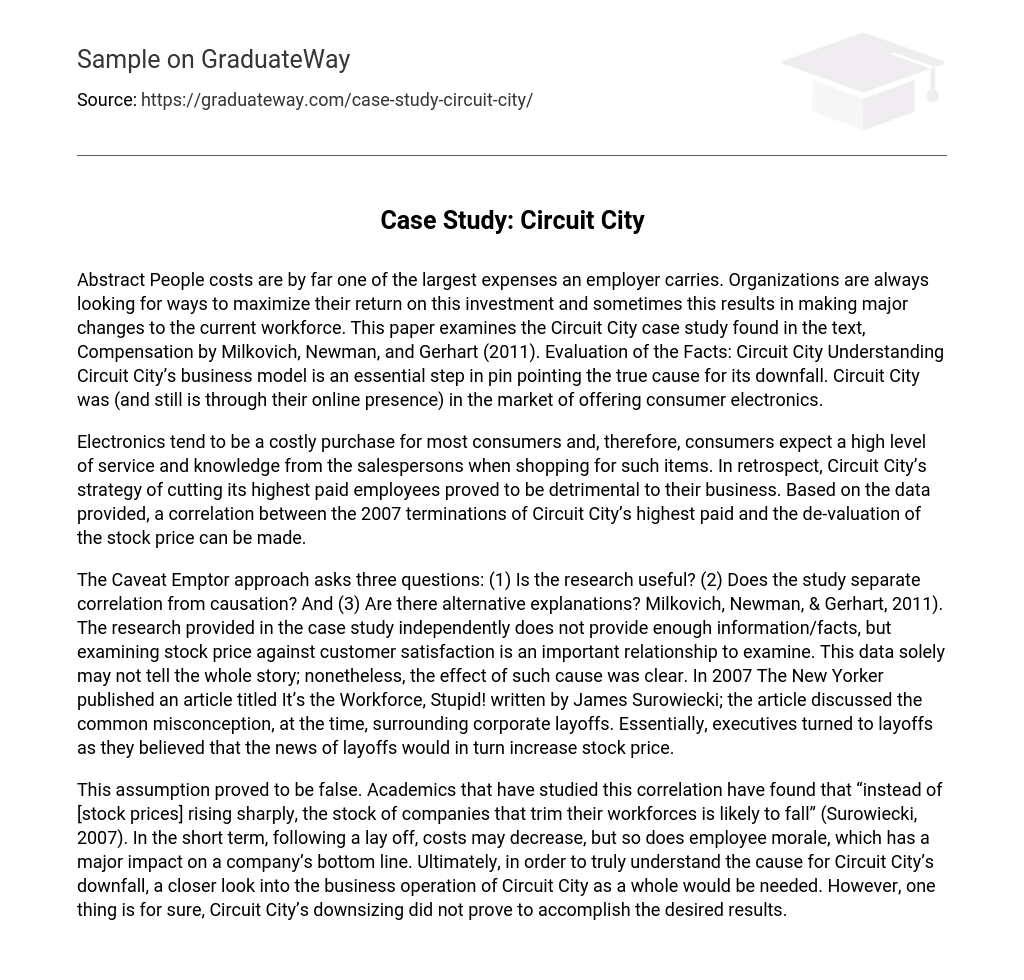Abstract People costs are by far one of the largest expenses an employer carries. Organizations are always looking for ways to maximize their return on this investment and sometimes this results in making major changes to the current workforce. This paper examines the Circuit City case study found in the text, Compensation by Milkovich, Newman, and Gerhart (2011). Evaluation of the Facts: Circuit City Understanding Circuit City’s business model is an essential step in pin pointing the true cause for its downfall. Circuit City was (and still is through their online presence) in the market of offering consumer electronics.
Electronics tend to be a costly purchase for most consumers and, therefore, consumers expect a high level of service and knowledge from the salespersons when shopping for such items. In retrospect, Circuit City’s strategy of cutting its highest paid employees proved to be detrimental to their business. Based on the data provided, a correlation between the 2007 terminations of Circuit City’s highest paid and the de-valuation of the stock price can be made.
The Caveat Emptor approach asks three questions: (1) Is the research useful? (2) Does the study separate correlation from causation? And (3) Are there alternative explanations? Milkovich, Newman, & Gerhart, 2011). The research provided in the case study independently does not provide enough information/facts, but examining stock price against customer satisfaction is an important relationship to examine. This data solely may not tell the whole story; nonetheless, the effect of such cause was clear. In 2007 The New Yorker published an article titled It’s the Workforce, Stupid! written by James Surowiecki; the article discussed the common misconception, at the time, surrounding corporate layoffs. Essentially, executives turned to layoffs as they believed that the news of layoffs would in turn increase stock price.
This assumption proved to be false. Academics that have studied this correlation have found that “instead of [stock prices] rising sharply, the stock of companies that trim their workforces is likely to fall” (Surowiecki, 2007). In the short term, following a lay off, costs may decrease, but so does employee morale, which has a major impact on a company’s bottom line. Ultimately, in order to truly understand the cause for Circuit City’s downfall, a closer look into the business operation of Circuit City as a whole would be needed. However, one thing is for sure, Circuit City’s downsizing did not prove to accomplish the desired results.





